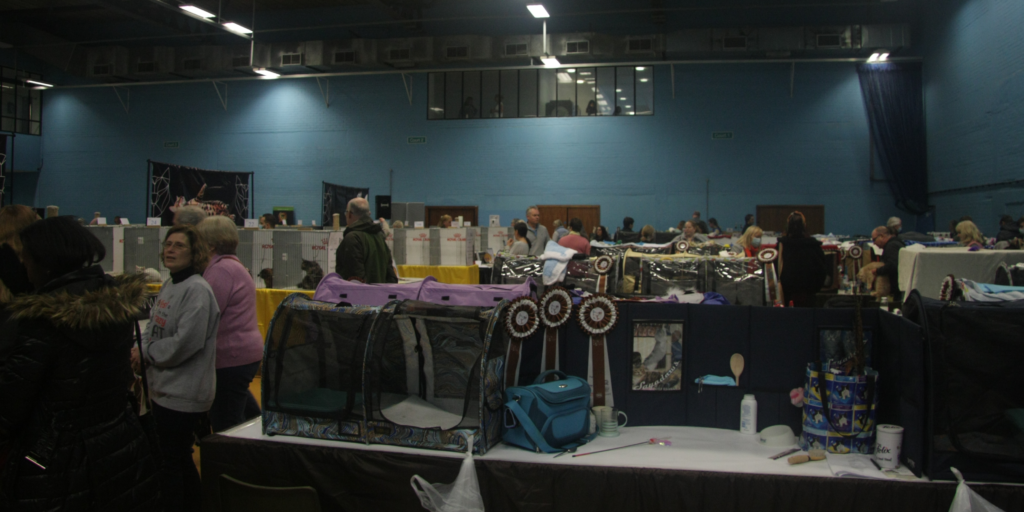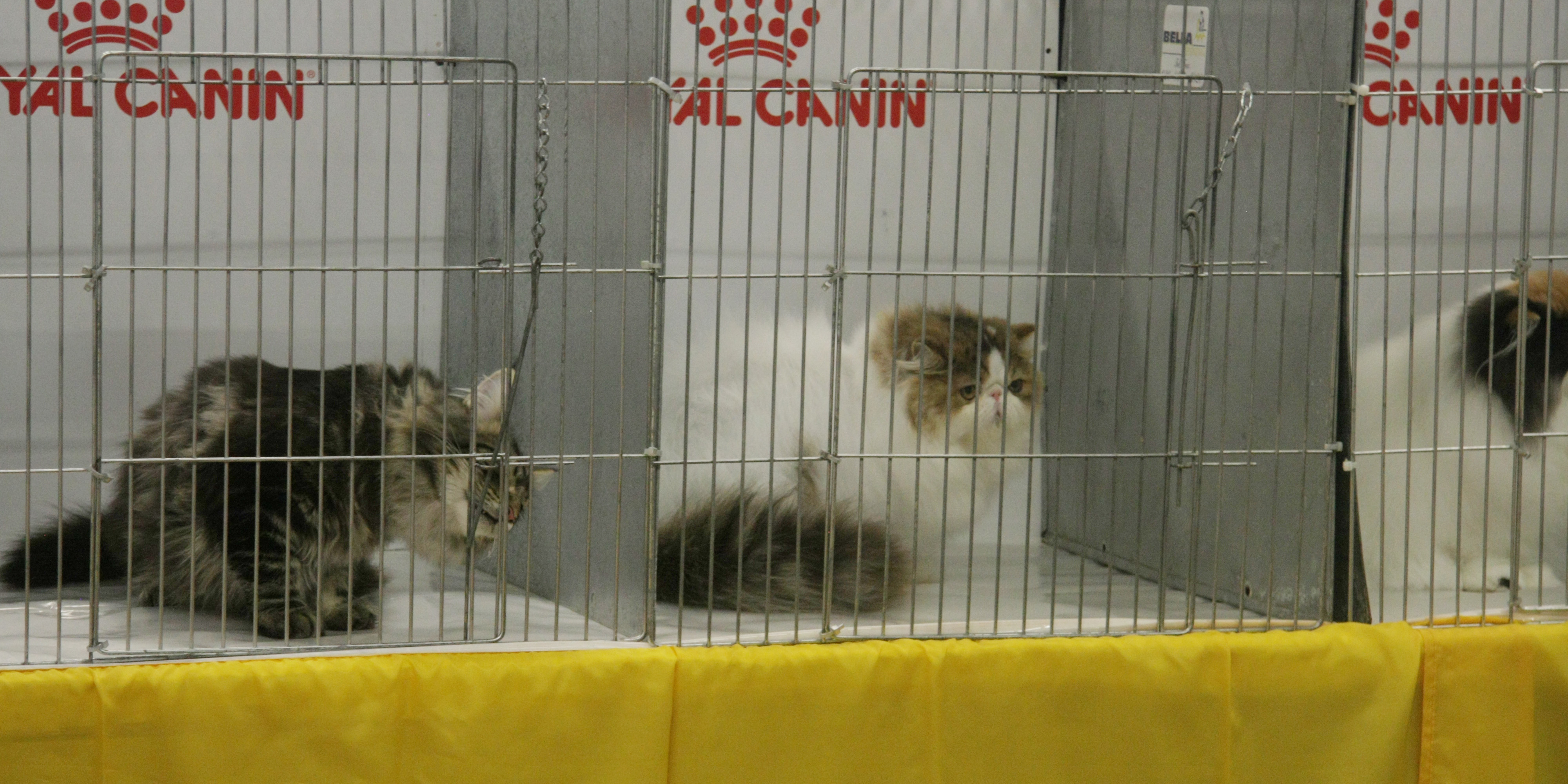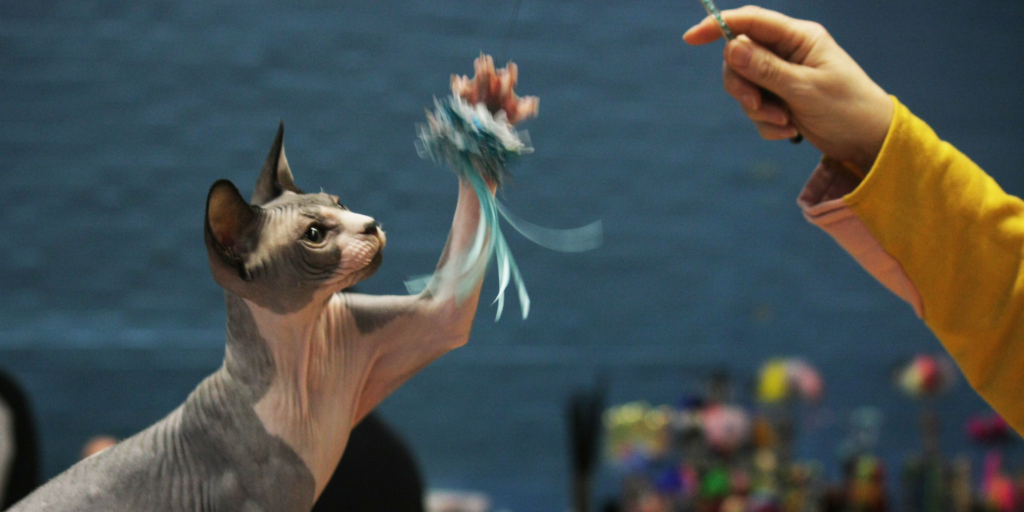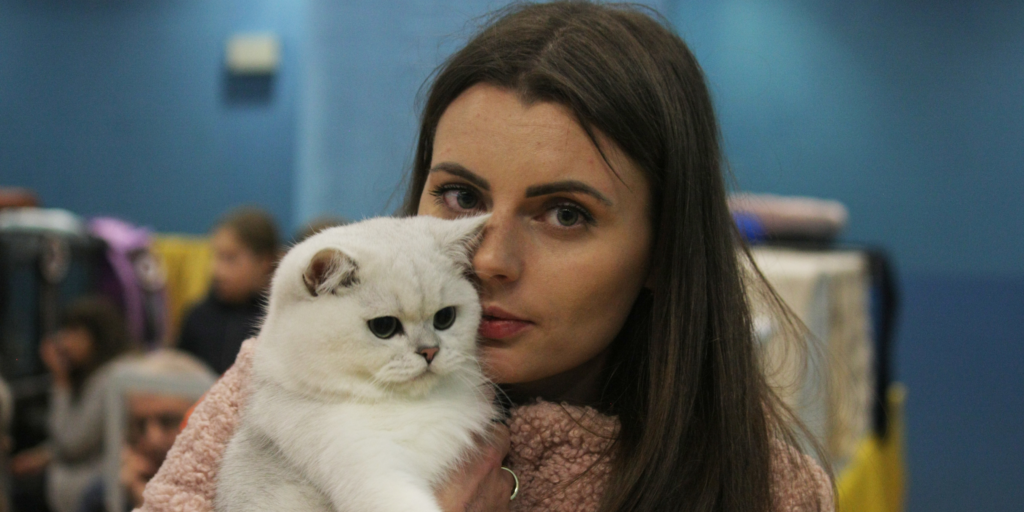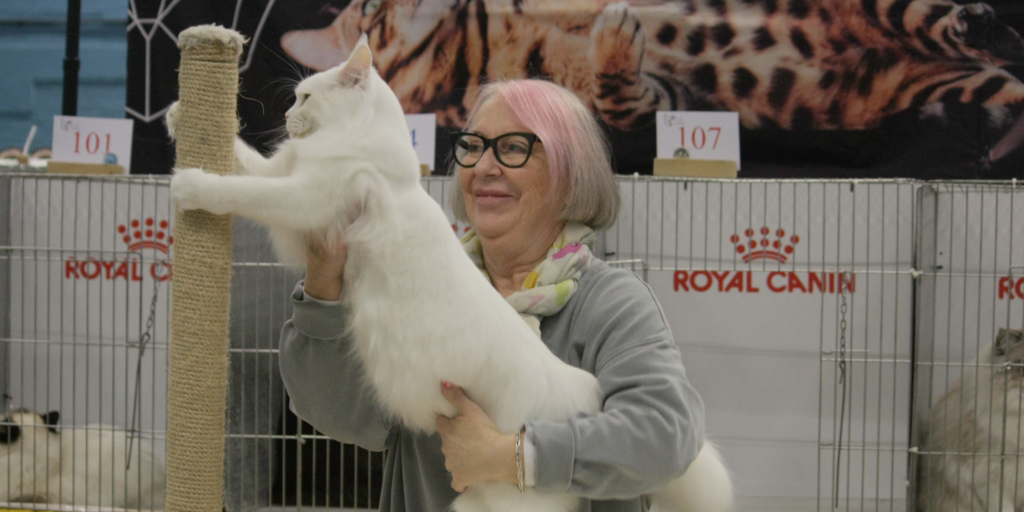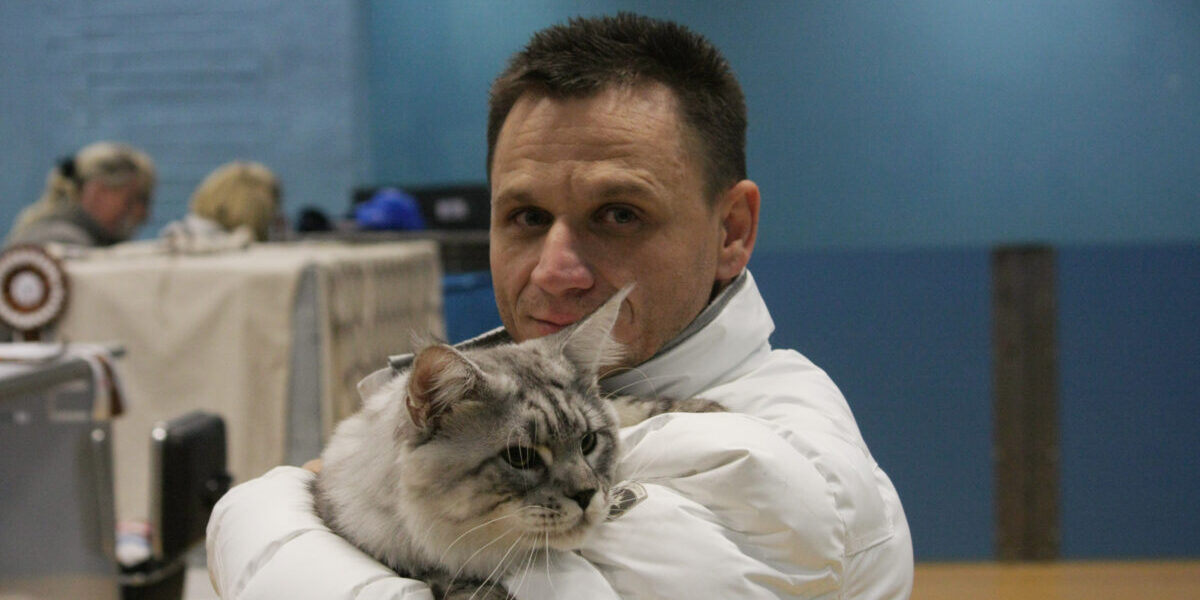

Leatherhead is a little town tucked in just south of the M25. According to Wikipedia, it has a population of just under 12,000 and in 2002 the BBC described the town as having “one of the worst high streets in England.”
The town lies on the quaint river Mole and can trace its history back to the Doomsday Book of 1086. Throughout its life, Leatherhead has peacefully ticked along as an agricultural centre, market town and home to a vacuum cleaner factory.
Even with this rich legacy, it might be surprising to learn that once a year Leatherhead plays host to world-beating competitors who descend on the town in their droves to take part in a competition that most of them have spent their entire lives preparing for.
This is the London Cats Worldwide (LCWW) cat extravaganza and Leatherhead is just one of many locations across the world that host weekend-long shows that see some of the finest pedigree cats from around the globe compete against each other for what can only be described as the ultimate prize.
“We don’t get anything for winning, just bragging rights and a weekend away,” says Jill Coomer, the proud owner of two of the cats on show, one a playful hairless Sphynx kitten who constantly interrupts our chat by trying to play with everything within a metres radius and the other a mature Ragdoll, “we love it because we get to meet up with people and cats we’ve met at other shows and just have a good time.”
The whole place is surreal. The smell of cat urine and disinfectant instantly is unmistakable and the sound of meowing is only ever briefly interrupted by announcements over the loudspeakers or bursts of applause. Groups of people stand together, talking and swooning over each other’s cats. The announcers regularly splutter out instructions like “long-haireds to ring 4”, to which spectators best be careful unless they want to be run over by someone rushing their 15lb Maine Coon to the ring.
In the centre of the hall are six rings, each containing a judging table with a scratching post. Surrounding the tables on three sides are cages that hold the cats for a short time before they’re judged.
On either side of the ring are rows of tables where those that are not being judged wait. This are is filled with cats of every description. Exotic shorthairs with faces like clenched fists relax next to Selkirk Rexs’, a fantastic breed that looks like an Ikea rug and Scottish Folds with ears folded forward look quizzically at American Curls whose ears bend the other way.
The range of carry cases on show is impressive. Some are simple affairs containing only the necessities, but others are simply palatial, with multiple rooms and even different floors for their felines to relax in.
The owners wait here too and they’re kept busy either grooming their cats for their next spell on the judging table or explaining the virtues of their chosen breeds to clusters of interested spectators.
“It’s all friendly now, but come the end of the season in January and things might be a little different,” says Kavita Vincent, whose showing four cats, her Burmese, Honey, is currently ranked best in the world.
Coming to an event like this for the first time and you wouldn’t be remiss for expecting to find a room full of yowling cats with puffy tails, hissing and clawing at each other whilst desperate owners try and restrain them with plaster covered hands, but this couldn’t be further from the truth.
The idea of cats being driven around the country, put into cages and being handled by strangers may not sit well with everyone. In the US, PETA have attempted to disrupt cat shows and events in the UK have been visited by Cats Protection, but nothing has ever come of it and it’s obvious why.
These cats are not distressed in the slightest. Most of them simply sleep the day away, others eagerly watch any shoelace that happens to drag along the floor and even on the judging table, with crowds of people watching, most cats are more than happy to chase a toy, stretch out on the scratching post or rub up against the judges’ arms. In six hours at the cat show, I only hear two hisses and see one judge with a plaster on his hand, his assistant tells me it was his fault anyway.
“The average moggy only sees its owners and its territory but from four weeks we’re socialising our kittens and getting them used to other people and cats, so this feels quite normal for them,” said Jayne Rogers, a friend of Jill’s and fellow competitor who is showing two blue-eyed Balinese.
“There’s no point in showing a cat that doesn’t enjoy it,” said Jill, “you’ll just distress them and they won’t perform, mine absolutely love it, this ones like a kangaroo crossed with god knows what,” she says just as her sphynx attempts a leap onto the roof of his neighbour’s carry-case.
For judging, the cats are split into a few categories based on age, hair length, if they’re neutered or if they’re a show cat or a household pet. Cats that match the same description compete against each other regardless of breed. When on the table, the judges tempt the cats with shiny toys and explain their scores to their audience, the whole thing takes some real showmanship and the judges do it well.
“Out of the 72 breeds of cat we probably have between 35 and 40 represented here today,” says Steven Meserve, founder and director of LCWW and one of the judges, “it’s my job to know the standard of points for each breed. For example, a Maine Coon has a certain number of points for ears, eye colour, muzzle and body and that all has to be considered to decide how close that cat comes to the perfect Maine Coon.” Steven knows the perfect cat when he sees one, he’s responsible for two world champions and his knowledge of cats and love of his job are plain to see.
The perfect Maine Coon, or any pedigree cat, does not come cheap. The ballpark figure for a legitimate pedigree kitty with all the paperwork is around £1,000, with those from the strongest bloodlines fetching as high as £8,000. Unsurprisingly, this has led to a cottage industry of so called ‘backyard breeders’ looking to make a quick buck through dodgy breeding.
“it’s not the reputable breeders that are filling the shelters and rescue homes, it’s the unregistered breeders who aren’t doing their background checks and their due diligence,” said Steven, “the point of events like this is to educate people on the importance of buying and forming relationships with proper, legitimate, breeders.”
“I breed about two litters a year and to buy a kitten from me you have to go through a massive month-long interview process, I do my background checks and do everything I can to make sure that that kitten is going to the right place.”
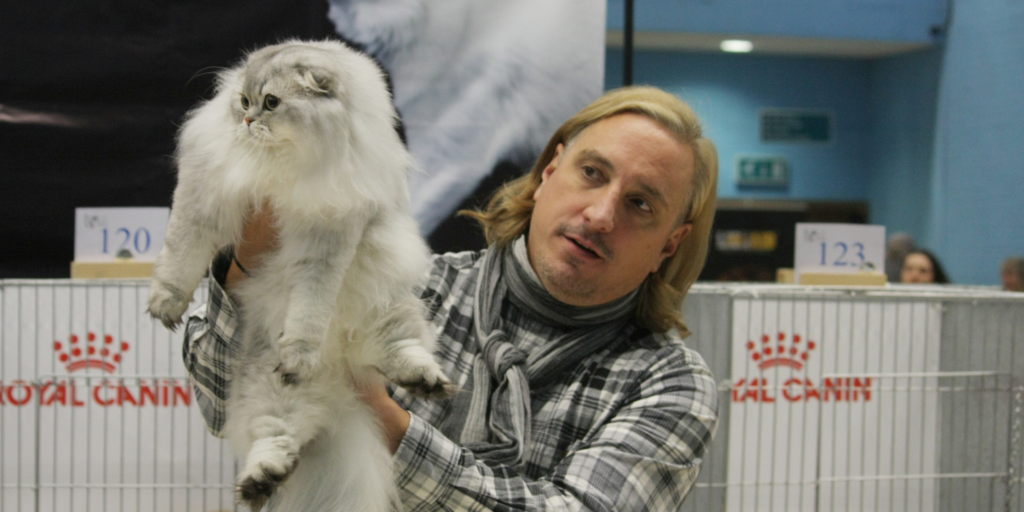
Steven Meserve shows a Scottish fold to the audience. As the name would suggest, the Scottish Fold has naturally folded down ears.
Legitimate cat breeding is not an easy game and is not one that is likely to pay, especially if you go to shows. The high costs of insurance, vets, travel, entrance fees, accommodation and more recently the expensive forms a pet owner must complete and have certified by a vet before they take their animals abroad means that those in this scene have to be in it for the love.
“I looked online the other day and there were 1400 Bengal kittens for sale and half of them weren’t even Bengals,” said Kay Hussey, a breeder of pedigree Bengals with two on show, including a Snow Lynx Bengal with five all-breed final victories, earning him the coveted title of Supreme Champion, “I’m naturally suspicious of everyone who comes to me wanting to buy a kitten and you can tell when they want them for breeding. I always register my kittens as pets so if they have a litter and the owner registers them it will be flagged, and I will pursue them in court because I make them sign a contract that explicitly states that their cat is to be neutered.”
There are good reasons for doing this. Because of the potential revenues involved, pedigree breeds are often overbred. This not only leads to poorly socialised kittens potentially going to inappropriate owners but can also lead to genetic defects as too many cats with similar genetic makeup are released into the populous to potentially breed together in the future.
“The breeders here today could just breed and sell their kittens but they come here to learn because they understand that every litter should be about bettering the breed,” says Steven, “every different breed has its own set of health needs and potential illnesses, so you need to introduce new bloodlines through the healthiest cats to ensure that the breed continues to thrive.”
The leisure centre is supposed to close at 4 PM, “they’re just going to have to wait, we’re finished when we’re finished,” says one spectator as the clock above the basketball hoop inches towards 5. The staff want to go home, the competitors and their four-legged friends do not.
Listening to the judges, breeders and competitors, it’s clear to see that this is not just a hobby but also not really a serious competition, “everybody wishes each other well but they’re all here to win,” Steven tells me, but it’s hard to believe it.
